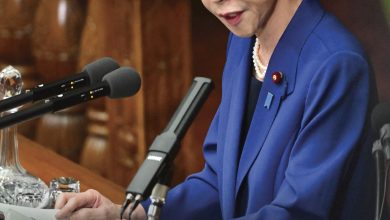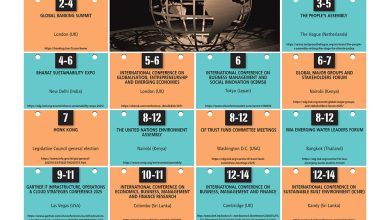NEW FRONTIERS
 TECH WARS US National Security Advisor Jake Sullivan is leading a carefully crafted initiative to limit China’s technological rise especially in high-performance semiconductors that are vital for AI and defence.
TECH WARS US National Security Advisor Jake Sullivan is leading a carefully crafted initiative to limit China’s technological rise especially in high-performance semiconductors that are vital for AI and defence.
This strategy enforces export restrictions on advanced chips to contain Chinese technological and military growth since Washington sees Beijing’s rapid advances as a security risk. Sullivan aims to balance security and economic interests with American tech firms that are voicing concerns over global competitiveness and potential market loss.
The strategy extends beyond US borders and seeks to build alliances to prevent China’s access to critical technologies. Through partnerships with nations such as Japan and South Korea, and European allies, his policy aims to create a coalition that restricts Chinese access to advanced technology while boosting domestic innovation and supply chain resilience.
Meanwhile, China accused the US of weaponising trade. Sullivan’s approach underscores a significant shift in US-China relations with technology now being a central arena for global influence and security.
META VISIONARY US tech biz Meta aims to revolutionise augmented reality (AR) with a more immersive and natural user experience through its latest innovation – Orion AR glasses. Unlike other AR devices, Orion boasts a 72 degree field of view, which is a notable increase from the 30-50 degrees typical in current models.
This broader display is made possible by advanced silicon carbide lenses and ultra-LED (ULED) projectors that enhance clarity and energy efficiency. The technology brings a level of depth and realism previously unseen in AR glasses, marking a major improvement in how users interact with digital content in the real world.
Although Meta did not disclose pricing or full specifications, CEO Mark Zuckerberg described Orion as a ‘time machine’ for its potential to transform daily life. Orion represents Meta’s foray into the mixed reality space to compete with giants such as Apple and Snap, which are also working on similar technologies.
However, Meta’s glasses are still in the experimental phase with no clear timeline for consumer availability.
The conglomerate also focussed on making AR glasses lightweight and practical for everyday use. If it is successful, Orion could lead to the replacement of smartphones as the primary interface for digital interaction, offering an immersive hands-free alternative to traditional devices.
HELLO KITTY It’s fictional character Hello Kitty’s 50th anniversary – a milestone that marks both nostalgia and reinvention for Japanese business Sanrio. After the entertainment biz’s youngest CEO Tomokuni Tsuji took over in 2020, the brand saw a shift in strategy.
Tsuji expanded Sanrio’s character lineup by promoting characters such as Aggretsuko and Cinnamoroll to appeal to a younger generation while reducing the brand’s reliance on Hello Kitty alone. Under his leadership, Sanrio revamped its marketing approach by focussing on global collaborations with brands such as Starbucks and Crocs.
This year-round visibility kept the characters relevant, ensuring sustained interest in a competitive market. Additionally, the business adopted AI tools to tackle counterfeit goods, and improved brand value and consumer trust.
Tsuji’s strategy is proving successful; because in two years since his appointment, Sanrio returned to profitability with its stock price rising tenfold and valuation exceeding US$ 6.5 billion.
While Hello Kitty remains a cultural icon, the diversified character roster opened up new revenue streams, solidifying the biz’s position in an evolving arena of entertainment.
Tsuji’s forward-thinking leadership exemplifies how embracing innovation while preserving legacy can lead to remarkable business growth.
BASILICA BONUS The Vatican and Microsoft collaborated to create a revolutionary digital twin of St. Peter’s Basilica by blending AI and high-resolution photography to preserve and enhance one of the world’s most iconic monuments.
Using drones, lasers and cameras, some 400,000 photos were taken over four weeks to create an ultra-precise 3D model of the basilica, allowing physical and virtual visitors to explore the site interactively.
Set to be unveiled as part of an initiative to support the Vatican’s 2025 Jubilee, the digital twin not only offers virtual access but also provides critical insights into the basilica’s structural health.
Using artificial intelligence, the model identified areas of deterioration including missing mosaic tiles and cracks that are difficult to spot with the naked eye.
This technological feat will greatly aid ongoing conservation efforts by providing real-time overviews of the building’s condition. Visitors can now reserve timed entry, which will reduce waiting time to enter one of the most visited sites in the world.
The collaboration is part of the Vatican’s wider efforts to merge modern technology with its spiritual mission by showcasing how AI can preserve cultural and religious heritage while making it more accessible for future generations. The project emphasises the role of technology in safeguarding history.





